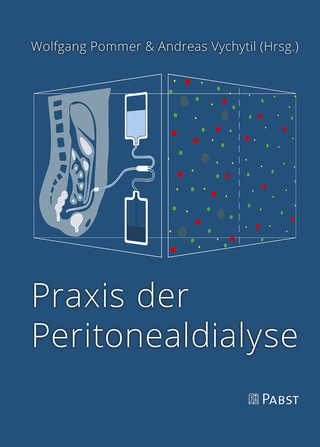
Medical Lasers and Their Safe Use
Springer-Verlag New York Inc.
978-0-387-97856-7 (ISBN)
- Titel ist leider vergriffen;
keine Neuauflage - Artikel merken
1. Introduction to Medical Laser Systems.- Light and Electromagnetic Radiation.- Generation of Laser Light.- Lasers and How They Work.- Energy Source.- Laser Action.- The Resonant Cavity.- Properties of Laser Light.- Monochromaticity.- Directionality.- Coherence.- Brightness.- Wavelength.- Pulsed and Continuous-Wave Lasers.- Q-Switching.- Mode Locking.- Beam Profiles.- Delivery Systems.- Laser System Control.- 2. Laser Systems.- Categories of Lasers.- Solid-State Lasers.- Gas Lasers.- Dye Lasers.- Semiconductor Diode Lasers.- Metal Vapor Lasers.- Free-Electron Lasers.- Specific Lasers Used in Medical Practice.- The Ruby Laser.- The Nd.YAG Laser and Related Solid-State Lasers.- The Co2 Gas Lasers.- The Excimer Laser and Other Ultraviolet Sources.- The Dye Laser: Pulsed and CW.- The Diode Laser.- 3. Laser-Tissue Interactions.- The Eye.- The Skin.- Other Tissues.- Terminology.- Spectral Band Designations.- Energy and Power.- Irradiance and Radiant Exposure.- Fluence.- Thermal Diffusion.- Fibers and Contact Tips.- Categories of Laser-Tissue Interaction.- Photocoagulation.- Photothermal Ablation (Vaporization).- Photochemical Ablation.- Photodisruption.- Photochemical Interactions.- 4. Laser Applications in Medical Practice.- General Surgery.- Tissue Interactions: Incision, Ablation, Coagulation.- Endoscopic Laser Surgery.- Dermatology.- Surface Vascular Lesions.- Pigment and Tattoo Removal.- Epithelial Lesions.- Ophthalmology.- Ophthalmic Photocoagulators.- Photodisruptors.- Ophthalmic Diagnostic Lasers.- Laser Corneal Surgery.- Cardiovascular and Chest Surgery.- Tissue Welding and Vessel Anastomosis.- Laser Angioplasty and Endarterectomy.- Gynecologic Lasers.- Otolaryngology and Head and Neck Surgery.- Neurosurgery.- Tumor Surgery.- Excision and Ablation.- Photodynamic Therapy.- Urology.- Anesthetic Considerations.- Biostimulation or “Soft” Lasers.- Diagnostic Lasers.- 5. Laser Injury and Potential Hazards.- Hazards to the Eye.- The Retina.- The Cornea and Lens.- Ocular Hazards of Specific Wavelength.- Skin Hazards.- Personnel Susceptibility.- Patient.- Fire Hazards.- Surgeons.- Surgical Assistants.- Bystanders.- Service Personnel.- 6. Safety Standards and Laser Exposure Limits.- National and International Standards.- ANSI Standards.- Federal Laser Performance Standard.- International Standards and Guidelines.- Laser Safety Exposure Limits.- Determining an EL.- Exceeding the EL.- Laser Hazard Classification.- Class 1 Laser Products.- Class 2 Laser Products.- Class 3 Laser Products.- Class 4 Laser Products.- Laser Hazard Assessment.- 7. Ancillary Hazards of Laser Use.- Electrical Hazards.- Airborne Contaminants (Vaporized Target Tissue).- Pathogens.- Chemical Contaminants—Fumes, Aerosols, and Vapors.- Protective Measures.- Chemical Hazards.- Nonlaser Light Sources.- Mechanical Hazards.- 8. Investigational and Research Lasers.- Introduction: Investigational and Prototype Lasers.- Investigational Lasers and the FDA.- Medical Device Regulations.- The Institutional Review Board.- The 1990 Amendments to the Medical Device Act.- Use of Approved Lasers in a Nonapproved Manner.- Laser Safety in the Experimental Environment.- Equipment Safety: Ancillary Hazards.- Laser Eye Protection.- Laser Accident History.- Hazard Evaluation Report for New Laser Systems.- 9. Engineering Control Measures.- Concepts of Engineering Controls.- Laser System Design and Required System Safety Features.- The Protective Housing.- Prevention of Access.- The Beam Delivery System.- Operation, Maintenance, and Service.- Beam Delivery Disconnect.- Key-Switch Master Control.- Remote Interlock (Control) Connector.- Viewing Optics.- Requirements.- Invisible Beam Filtration.- Color Rendering.- Ophthalmic Flashbacks.- Auxiliary Optics.- Beam Attenuator.- Power Meters.- Beam Emission Indicator.- Guarded Switch.- Labeling.- Ancillary Hazards.- The Nominal Hazard Zone and Focused Beams.- Laser Room Design and Controlled Areas.- Doorway Interlocks.- Warning Signs and Lights.- Light Leaks—How Important?.- Controlling Reflections.- Table, Cabinet, and Instrument Surfaces.- Cabinets and Wall Surfaces in the Laser Surgical Suite.- Software and Electronic Failures.- 10. Personnel Protective Equipment.- Eye Protection.- Specifying Laser Eye Protectors.- Optical Density.- Visual Transmittance.- Filter Damage.- Comfort and Fit.- Filter Testing.- White Light Protection.- Methods of Construction.- Skin Protection.- Respiratory Protection.- Available Respirators.- 11. Administrative Control Measures.- Laser Safety Program.- Laser Safety Committee.- Laser Safety Officer.- Laser Safety Training.- Laser Credentialing.- Background.- Inpatient or Hospital-Based Surgery.- Outpatient or Office-Based Surgery.- Examples of Standard Practice.- Sample Laser Safety Standing Operating Procedures.- Hospital Laser Safety Regulations.- Scope of a Regulation.- Example of Regulations.- FDA Administrative Controls.- Appendix 1.- Appendix 2.- Appendix 3.- Appendix 4.- Appendix 5.- Appendix 6.- Appendix 7.- Appendix 8.- Appendix 9.- Appendix 10.- Appendix 11.- 12. Medical Surveillance.- History.- Current Aims of Medical Surveillance of Laser Workers.- Population to be Monitored.- Problems.- Definition of Population.- Frequency.- Medical Examinations.- Medical History.- Vision Testing.- Aims.- Ophthalmic Examination.- Ocular History.- Vision Screening Examinations.- Ophthalmologic Examination Following an Incident.- Coincidental Pathology and Malingering.- Lesions that Mimic Laser Injuries.- Laser-Specific Testing.- 13. Laser Checkout and Demonstration Procedures.- Simple Tests of Laser Operation.- Philosophy of Check Tests.- The 1-Joule Test for the CO2 Laser.- Optical Viewing System Alignment for CO2 Lasers.- Safety Filters in Viewing Optics.- Nd:YAG Ophthalmic Photodisruptor Tests.- Aiming Beam Alignment.- Optical Breakdown in Air.- Target Box.- Ablative Lasers.- Safeguards During Demonstrations and Training.- Installation of Lasers at Medical Equipment Exhibitions and Training Sites.- Appendices: Useful Reference Information.- Appendix 1: Abbreviations.- Appendix 2: Simplified Glossary.- Appendix 3: Occupational Safety Limits.- Appendix 4: Regulatory and Standardization Bodies.- Appendix 5: Laser Safety Equipment.- Appendix 6: Variances.
| Zusatzinfo | illustrations |
|---|---|
| Verlagsort | New York, NY |
| Sprache | englisch |
| Maße | 165 x 241 mm |
| Gewicht | 522 g |
| Themenwelt | Medizin / Pharmazie ► Medizinische Fachgebiete |
| Technik ► Medizintechnik | |
| ISBN-10 | 0-387-97856-9 / 0387978569 |
| ISBN-13 | 978-0-387-97856-7 / 9780387978567 |
| Zustand | Neuware |
| Haben Sie eine Frage zum Produkt? |
aus dem Bereich


